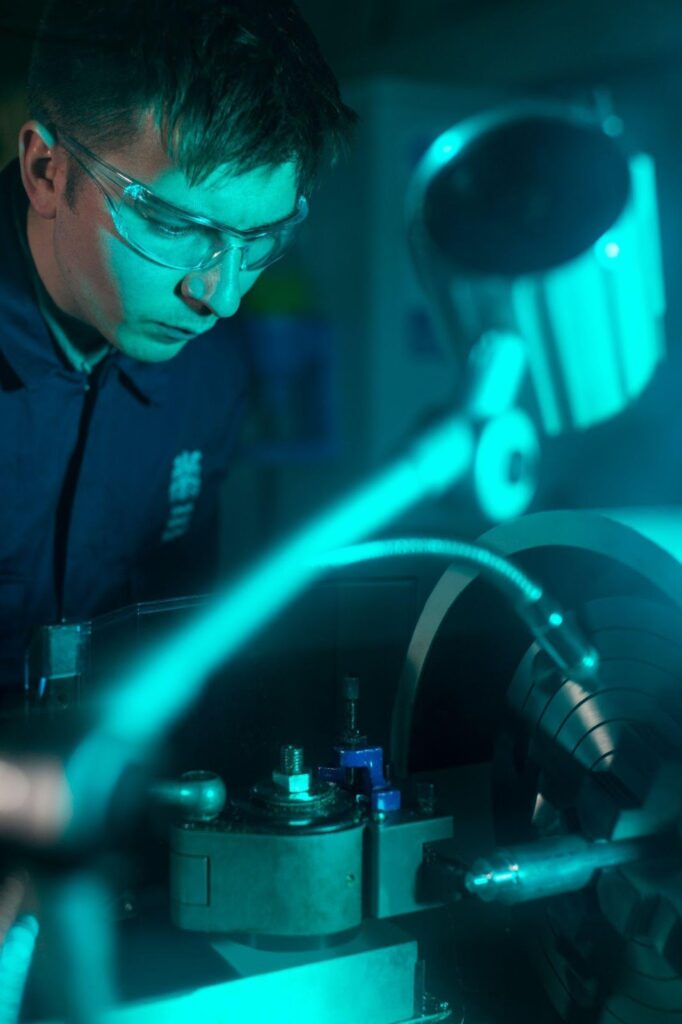By: Jonathan Moore
In the fast-paced realm of mechanical engineering, the evolution of virtual prototyping has revolutionized how products are conceptualized, designed, and brought to life. Successful mechanical engineer, Hazim Gaber, explores the world of virtual prototyping, a sophisticated method utilizing simulation and modeling to streamline the product development process.
Virtual prototyping changes the game for mechanical engineers. By creating digital replicas of physical systems, engineers can meticulously test and refine their designs without the need for costly physical prototypes. This not only slashes development time but also significantly reduces expenses, a boon for companies aiming to optimize resources.
“The impact of virtual prototyping extends beyond efficiency gains,” says Hazim Gaber. “It fuels innovation by allowing engineers to explore novel ideas and scenarios in a risk-free environment.”
Understanding Virtual Prototyping
Virtual prototyping involves a comprehensive approach to product development, integrating computer-aided design (CAD), computer-aided engineering (CAE), and computer-aided manufacturing (CAM). At its core, this method entails creating digital replicas of physical products and systems, enabling engineers to simulate their behavior under various conditions.
CAD serves as the initial step, where intricate 2D or 3D models are crafted with meticulous attention to detail. These models form the foundation for subsequent analysis in CAE, where engineers test the product’s performance in virtual environments. CAE allows for the simulation of stress, heat transfer, fluid dynamics, and other crucial factors that impact a product’s functionality.
Once the design is optimized through CAE, CAM takes the reins, translating the virtual model into instructions for machinery, such as CNC (Computer Numerical Control) machines or 3D printers. This seamless integration of CAD, CAE, and CAM not only accelerates the development process but also ensures precision and cost-effectiveness.
Accurate representation of real-world conditions within these virtual environments is paramount. Engineers must simulate factors like material properties, environmental influences, and operational scenarios to validate the design’s reliability. Advanced software tools play a pivotal role in this process, offering sophisticated simulation capabilities and enabling engineers to iterate rapidly toward an optimal design solution.
Advantages of Virtual Prototyping
Virtual prototyping presents a plethora of advantages over traditional methods, marking a significant leap forward in product development practices. One of the most notable benefits is the substantial increase in speed and efficiency throughout the development cycle. By eliminating the need for physical prototypes at early stages, engineers can swiftly iterate designs and promptly identify potential issues.
Cost-effectiveness is another compelling advantage. The reduction in physical prototypes and testing not only saves material costs but also slashes the expenses associated with multiple iterations. This streamlined approach significantly lowers the overall development expenditure, a boon for companies striving to maximize their resources.
Virtual prototyping offers an unparalleled ability to thoroughly analyze and optimize designs before they enter the realm of physical manufacturing. Engineers can simulate a myriad of scenarios, from stress tests to fluid dynamics, fine-tuning every aspect for optimal performance.
Collaboration among multidisciplinary teams is also greatly enhanced through digital platforms in virtual prototyping. Designers, engineers, and manufacturers can work seamlessly together, regardless of geographical location, to refine and validate designs. This synergy fosters innovation and ensures that every facet of the product is meticulously scrutinized before production commences.
Notes Hazim Gaber, “The advantages of virtual prototyping are not just in the realm of efficiency and cost, but also in the depth and quality of the final product.”

Applications Across Industries
Virtual prototyping’s reach extends far beyond a singular industry, with its versatile applications catering to diverse sectors seeking innovation and efficiency. In the automotive industry, engineers harness virtual prototyping to design and test vehicle components and systems. From engines to safety features, virtual simulations allow for comprehensive analysis and optimization before physical testing, resulting in safer and more efficient automobiles.
The aerospace industry benefits immensely from virtual prototyping, where engineers simulate flight conditions to optimize aircraft structures and performance. By creating digital models of aircraft and subjecting them to various scenarios, such as turbulence or extreme weather, potential design flaws can be identified and rectified prior to manufacturing.
Consumer electronics is another arena where virtual prototyping shines. Engineers model and test electronic devices, ensuring they meet stringent performance and durability standards. By simulating user interactions and environmental factors, such as temperature and humidity, manufacturers can fine-tune their products for optimal user experience and longevity.
Virtual prototyping plays a pivotal role in designing and refining surgical instruments and implants. Through simulation, engineers can evaluate the functionality and compatibility of these devices within the human body, enhancing patient safety and surgical outcomes.
Across these industries and beyond, virtual prototyping continues to revolutionize product development, offering a cost-effective, efficient, and innovative approach to design and testing.
Future Trends and Challenges
As virtual prototyping continues to evolve, several emerging trends are poised to shape its future landscape. One of the most prominent trends is the integration of artificial intelligence (AI) and machine learning (ML) into virtual prototyping technology. AI and ML algorithms can analyze vast datasets to identify patterns and trends, enabling predictive modeling for product performance. This integration holds the potential to streamline the design process further and enhance the accuracy of simulations.
With these advancements come challenges that must be navigated. Ensuring the accuracy of simulation results remains a critical concern. Engineers must validate that virtual prototypes accurately reflect real-world behaviors and conditions.
“Managing the increasing complexity of data sets generated by advanced simulations poses a challenge,” says Gaber.
Efficient data processing and interpretation methods will be essential to derive meaningful insights from these datasets. Another crucial aspect is the importance of continuous learning and adaptation within the field. As software and hardware technologies evolve, engineers and organizations must stay abreast of the latest developments.
Published By: Aize Perez







